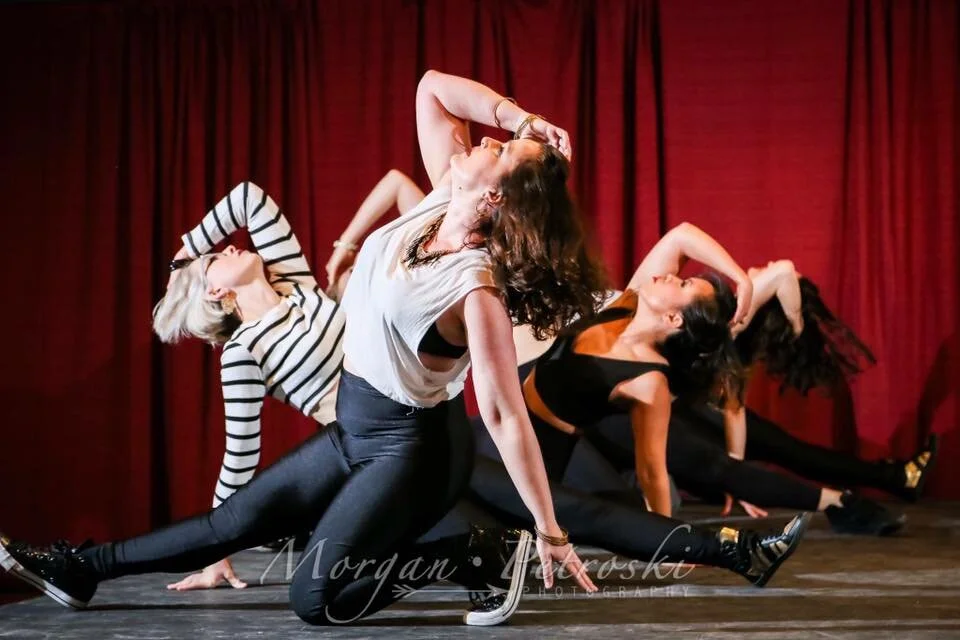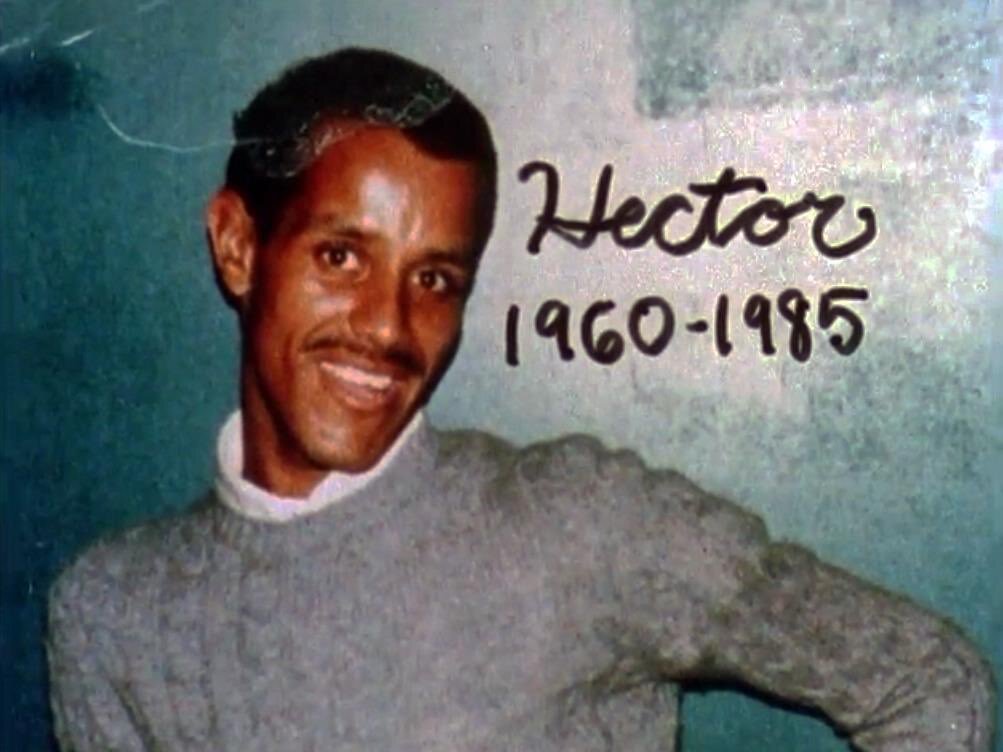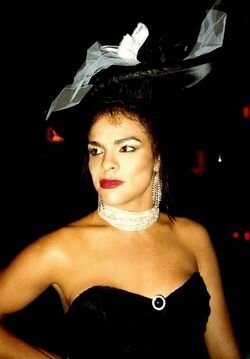Welcome to the Routine Rewind series on the Diamond Dolls blog!
Image Source: Morgan Petroski
We will be taking a look back at some of our past routines and giving them a historical and cultural context covering things from song inspirations, artist highlights, discussing the origins of the dance styles, and more. Join us on the first of every month right here to follow this new series.
This month we are taking a look back at the inspiration behind our routine Vogue.
Note from the choreographer
Jamica Zion
“I'm glad y'all are explicit in talking about race and history now because at the time I was very intentional about the song, choreography, and styling. I started the season off by giving a history of vogue and talking about Madonna specifically- that she didn't come up with it, but helped popularize it. Knowing the demographics of the Dolls and their usual audience (white majority) I wanted it to embrace Madonna's vogue. Therefore I often described the routine as "vogue inspired" (and it's titled Vogue because of the team's naming convention- named after the song). I was anxious about trying to balance creating a fun choreography that would be challenging for the average member, while also remaining culturally considerate and mindful of race. I feel good knowing that I introduced several members to vogue outside of Madonna and I am satisfied with how it turned out!”
Drag Ball in Webster Hall in the 1920’s. Image Source: https://cfda.com/news/striking-a-pose-a-history-of-house-balls
A BRIEF HISTORY OF VOGUE DANCING
Voguing is a type of dance and performance genre that developed in the 1960s-1980s by the African-American and Latinx LGBTQ+ communities in the Harlem neighborhood of New York City and has expanded to have scenes all over the United States including: Philidelphia, Los Angeles, Atlanta, Chicago, and Detroit, as well as international locations. The style was named for the famous fashion magazine, Vogue, and derived from the poses used by high-fashion models and ancient Egyptian art. Exaggerated movements and hand-gestures are added and “...tell a story and imitate various gender performances in categorized drag genres.” (Wolde-Michael, Tsione) During this era, drag competitions, referred to as “balls'' or “ballroom culture” were extravagant events of pageantry where individuals would “walk” to earn prizes and trophies and would consist of a mixture of dance, performance, modeling, and lip-singing. Ballroom culture has roots dating back to the late 1800s and derived out of necessity for solace, self-expression, and celebration for the African-American and Latinx LGBTQ+ communities, and particularly youth within those groups.
“At the beginning of the twentieth century, a distinctly black LGBTQ culture took shape in Harlem. The Harlem Renaissance (1920-1935) was particularly influential to this process. The intellectual, cultural, and artistic movement took the neighborhood by storm, bringing with it a flurry of literature, art, and music that centered black life. Many of the movement’s leaders were openly gay or identified as having nuanced sexualities including Angelina Weld Grimké, Claude McKay, Langston Hughes, Wallace Thurman, Alice Dunbar-Nelson, Alain Locke, and Richard Bruce Nugent among others. The movement offered a new language that challenged social structures and demonstrated the ways that race, gender, sex and sexuality distinctions were actually intersecting, fluid and constantly evolving.” (Wolde-Michael, Tsione)
Over time, balls evolved into vogue battles where people would compete for trophies and reputation for their house. The term “house” is also inspired by the famous designer houses of the fashion industry and were “...formed to create a safe place and family structure for young queer kids who were often rejected by their biological families and were essentially homeless.” (Chanel, Isla Jones) Houses are run by “mothers” and “fathers” who are older members of the scene that provided support and guidance to their younger counterparts, known as “children.” Houses compete for trophies, recognition, and to reach legendary status.
Image Source: https://www.theatlantic.com/photo/2019/11/nyc-kiki-community/599830/
STYLES OF VOGUE
Old Way (pre-1990)
Individuals strike poses in succession using clean lines, sharp transitions, and symmetry inspired by fashion poses and Egyptian hieroglyphs.
New Way (post-1990)
Defined by extreme flexibility and contortions coupled with rigid movements, and control of the arms with hand gestures and illusions.
Vogue Fem (circa 1995)
Influenced by modern dance, ballet, and jazz dance styles, this style is “Fluidity at its most extreme” and features extreme feminine movements as well as “Dramatics,” meaning speed, stunts, and tricks.
Elements of Vogue Fem:
Catwalk: very exaggerated feminine walk with legs crossing over another and hips jetting out to either side.
Duckwalk: squatting and bouncing on one’s heels with legs alternating kicking to the beat.
Floorwork: twisting, rolling, and moving on the ground to highlight sensuality.
Hands: gestures that tell a story and are often used to throw shade, a way of mocking other competitors.
Spins and Dips: turning and dropping to the floor to the climax of the beat of the music.
A FEW NOTABLE FIGURES
Image Source: https://en.wikipedia.org/wiki/Paris_Dupree
Paris DuPree
Paris DuPree was the founding mother of the House of Dupree established in 1975 in Harlem, NYC, and is credited with coining the term and creating the dance of Vogue. “It all started at an after-hours club called Footsteps on 2nd Avenue and 14th Street,” says David DePino, an influential DJ for the voguing community. “Paris Dupree was there and a bunch of these black queens were throwing shade at each other. Paris had a Vogue magazine in her bag, and while she was dancing she took it out, opened it up to a page where a model was posing, and then stopped in that pose on the beat. Then she turned to the next page and stopped in the new pose, again on the beat. The provocation was returned in kind. Another queen came up and did another pose in front of Paris, and then Paris went in front of her and did another pose,” adds DePino. “This was all shade—they were trying to make a prettier pose than each other—and it soon caught on at the balls. At first, they called it posing, and then because it started from Vogue magazine, they called it voguing.” (Lawrence, Tim) DuPree also helped evolve balls into a performative event with categories in which people would compete.
Image Source:https://welcome2thebronx.com/tag/gay-and-lesbian/
Willi Ninja
Willi Ninja founded the House of Ninja in 1982 in Harlem, NYC and has been said to have been the “godfather of vogue” and turned voguing into an art form. “Willi Ninja did not ‘pass’ as a woman. He did not live as a woman nor do full drag. He walked and danced down the stage sporting a mustache, long hair, large jewelry pieces, make-up, women’s clothes, all while performing a blend of masculinity and femininity... an androgynous self-described butch queen, performed a fluid gender presentation in a world that celebrates white male heteronormativity and in a subculture that rewarded woman realness. He just wanted to be himself and showcase his talents and techniques.” (Herrera, Ana)
Image Source: https://m.imdb.com/name/nm0495568/mediaviewer/rm3929902849/
Pepper LaBeija
Pepper LaBeija won 250 trophies over her lifetime and was known for her Egyptian-inspired drag performances. “The House of LaBeija is the oldest and most adored house in New York’s drag and ballroom scene. It was founded in the 1970s by Crystal LaBeija and the “house mother” role was taken on by Pepper LaBeija a few years later. She remained in this role for over 20 years.” (Parkins, Cameron)
Image Sources: https://granvarones.com/hector-valle-xtravaganza/, https://www.findagrave.com/memorial/147687901/angie-xtravaganza
Hector & Angie Xtravaganza
Hector Xtravaganza founded the House of Xtravaganza and debuted in 1983 under their dual leadership. This was the first Latinx house in the ballroom scene which created a fiercely tight bond within the house. After gaining a substantial reputation as a Latinx house, Angie decided to not discriminate and began to include all ethnicities and races although it is still mostly Latinx. House Xtravaganza was unique in its members and performances, but also was one of the first houses to incorporate messaging about HIV/AIDS prevention and treatment into their mission.
PARIS IS BURNING
Vogue and ballroom culture had been mainly underground until the release of the documentary, Paris Is Burning by Jennie Livingston, that launched them into the mainstream. However, this film remains controversial due to its all-white crew and director; highlighting/seeking out the negative aspects/stereotypes of the culture; and leaving all people featured in the film exploited and without compensation. After the release of this film, the houses and their members saw the launch of their careers and popularity.
Image Source: https://nmaahc.si.edu/blog-post/brief-history-voguing
Learn more about ball culture and vogue:
Ballroom Culture: the Language of Vogue | Ronald Murray | TEDxColumbus
WATCH THE DIAMOND DOLLS PERFORM VOGUE:
Sources:
https://www.theatlantic.com/photo/2019/11/nyc-kiki-community/599830/
https://cfda.com/news/striking-a-pose-a-history-of-house-balls
https://www.lofficielusa.com/politics-culture/history-gay-nightlife-nyc-clubs-drag-ball
The Vogue of Life: Fashion Culture, Identity, and the Dance of Survival in the Gay BalIs. Tara Susman. Columbia University. https://uknowledge.uky.edu/cgi/viewcontent.cgi?article=1220&context=disclosure&httpsredir=1&referer=
The 5 Elements of Vogue with Leiomy Maldonado - In Progress | Oxygen, retrieved 2017-05-02
Livingston, Jennie (1991-08-01), Paris Is Burning, retrieved 2017-05-02 https://en.wikipedia.org/wiki/Vogue_(dance)#cite_note-15
Becquer, Marcos; Gatti, Jose (1991-09-01). "Elements of Vogue". Third Text. 5 (16–17): 65–81 https://en.wikipedia.org/wiki/Vogue_(dance)#cite_note-:1-2
https://www.theroot.com/gay-history-is-black-history-these-10-icons-prove-it-1835618603









